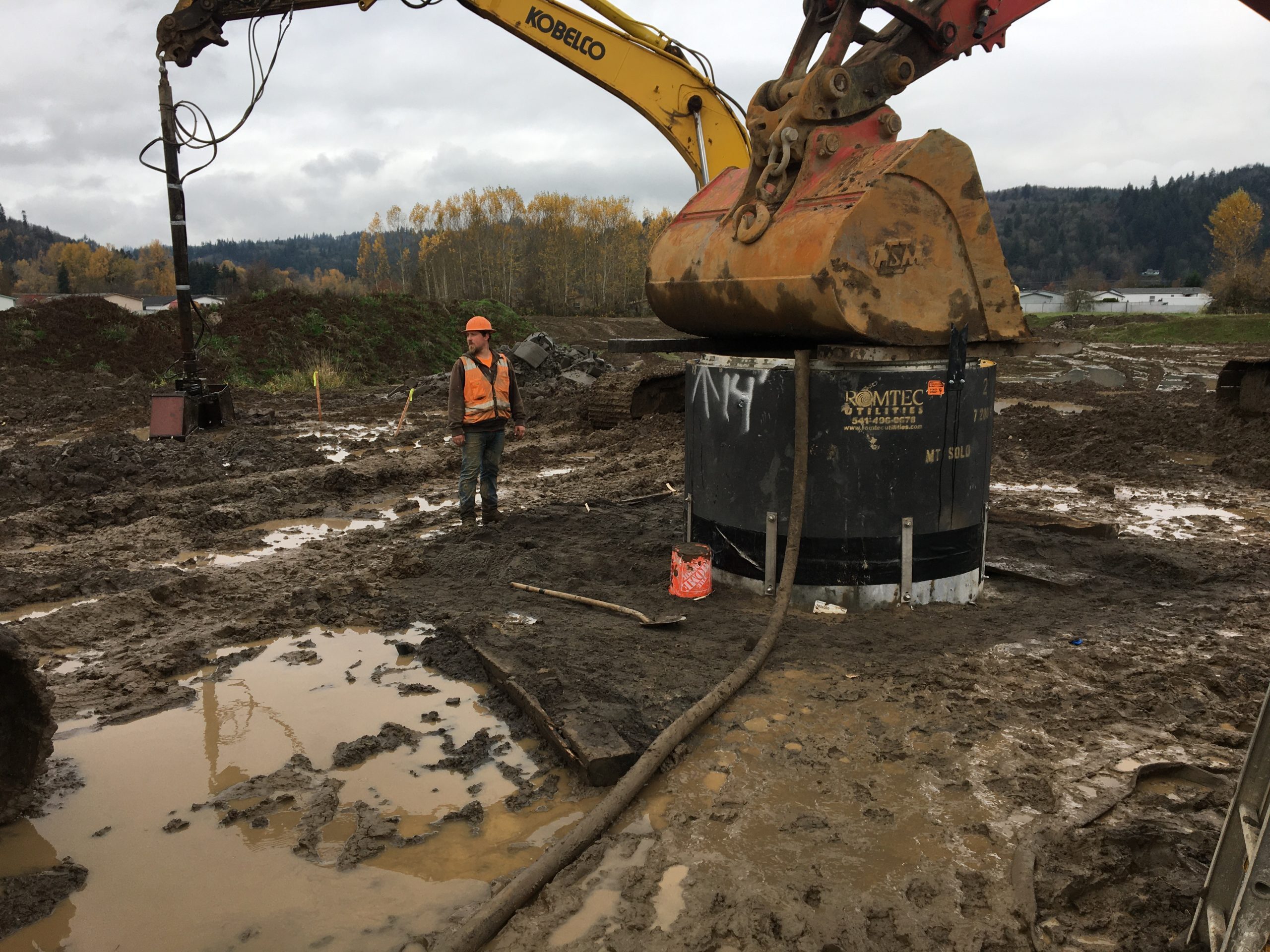Installing a Lift Station Without Open Excavation

As a leading supplier of wastewater, stormwater, and custom lift stations in the United States, Romtec Utilities is always looking for solutions to common problems with lift stations and their installation. These can be different equipment, materials, coatings, and even construction methods. While often, a site will require traditional installation of a wet well, Caisson construction may be an easier option in select areas.
Traditionally, lift stations are installed in pre-dug holes with shoring around the edges of the depression. This is done by the General Contractor on the project, who will ensure that the hole is at the accurate depth to accommodate the lift station. When the lift station shipment arrives at the job site, the base and “barrels”, or sections, of the wet well are lifted from the shipment truck with a crane and carefully placed and stacked in place. Once constructed, the installing contractor will backfill to fill in the spaces around the wet well and cover any remaining depressions as a result of construction.

Caisson construction is an alternative to traditional wet well installation that involves the placing of an open base, sectional wet well structure with a “cutting shoe” attached as a part of the bottom section. In Caisson installation, the wet well base is placed at or just below grade, and the hole is excavated through the wet well itself. As soil and earth is removed through the open wet well, the structure sinks into the ground, often with additional ballast and/or lubrication. As the wet well sinks into the ground, sections are added on top to push the wet well further and to the depth required to house the entire wet well structure. Once the entire well is installed, the base of the wet well is poured in place. Caisson installation does not require pre-dug holes or shoring, but is not an option for all lift stations.
Caisson installation is generally only a feasible option (both technically and economically) on job sites with high groundwater, granular silt, sand or gravel, and no excessive boulders, wood chunks, other large obstacles, or soil cementation on the site. For these locations, Caisson installation can help save money and time by removing the need for expensive shoring or dewatering of the sump.

Excavated holes in traditional installation often collect groundwater that leaks into the sump from the now exposed soil, or in rainy locations the excavated area is subject to the elements. Rain and groundwater can easily collect in the excavated areas and will need to be removed before the lift station is installed. In areas with high groundwater, the dewatering of these holes can be time consuming and costly, and Caisson installation may an be option.
Each method of installation has its benefits and detriments, and the same is true of Caisson installation. In select areas it may be less expensive because of shoring and dewatering costs, but it is also less precise than traditional installation. Caisson installation increases the possibility of error during construction and requires higher tolerances for equipment and piping clearances and plumb/level lines. Since the lift station is installed by excavating through the interior of the wet well, it is also essential to have an installer that is experienced, thorough, and detail oriented to ensure correct placement and prevent damage to the wet well during installation. This is of particular importance as once the structure is placed, it is difficult or even impossible to correct placement errors.
Traditional installation does require shoring and potentially dewatering, but it allows for prefabrication, pre-assembly, and testing at the manufacturers facility to ensure that there are no issues before shipping out to the job site. This allows for maximum precision in equipment and pipe penetration placement, quality control checks, lower risk of installation errors, and the potential to save time during installation on the job site.
With our knowledge and expertise installing lift stations in locations nationwide, Romtec Utilities has the capability to accommodate for traditional or Caisson installation at sites depending on the site conditions. Both methods feature their own benefits and detriments. Romtec Utilities does not endorse or recommend one construction method in particular, as each project has unique circumstances and challenges. The information above is an analysis of the two methods, and should not be used as the sole basis for determining construction methods.

